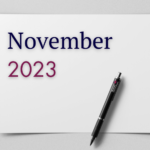Everyone knows what a map of the world looks like, but few have a complete understanding of how populations are distributed between countries. Essentially, we are interested in looking at the ratio of population per land area. For example, Australia is a country roughly the size of the United States; yet its population of 24 million is just seven percent of the 326 million strong population of the US.
Consider the chart below published by the World Economic Forum. The land covered in blue represents five percent of the world’s population. And the land covered in red also represents five percent of the world’s population! Is this not mind-blowing?
Another way to think about global population distribution is to take a map of the world and scale each country up or down based on the size of its population. The chart below, which was produced by TeaDranks and published by Vox, illustrates the size of every country in the world represented by tiny squares. Each square represents 500,000 people. The result is that every country on the map is proportional to its population.
What really stands out in the chart above is the enormous size of India and China; as well as the tiny size of countries like Australia. From an investing perspective, population size matters because this drives consumption, production and investment levels.
As we invest globally at Montaka, we are aware of these high level macro skews and seek to position the portfolio appropriately. Take Alibaba (NYSE: BABA), for example; a position in Montaka’s long portfolio. Think of it as the Chinese version of Amazon, Ebay and Paypal all rolled into one company. It is the largest e-commerce platform in the world with around 400 million active annual users transacting around half a trillion US dollars worth of gross merchandise volume each year (and growing rapidly).
Yet we like Alibaba not just for its core e-commerce business. We also like its portfolio of “real options” – a series of strategic investments the company has made which, while less significant today, could become very significant in the future. These include:
- UCWeb – the most popular web browser in China with approximately 66 percent market share; and the most popular in India with around 34 percent market share. UCWeb has over 500 million users worldwide. (For comparison, Twitter has only 320 million users worldwide).
- Micromax – India’s largest domestic mobile phone maker which is currently the second most popular smartphone in the country after Samsung (and well ahead of Apple).
- Snapdeal – an Indian online marketplace focused on mobile commerce.
- Youku – the Chinese version of YouTube, a video hosting service.
We believe that as the incomes of Chinese and Indian consumers grow, so too will the intrinsic values of many of these real options that are owned by Alibaba. And so too will Montaka’s investors benefit from this portfolio exposure.
Andrew Macken is a Portfolio Manager with Montgomery Global Investment Management. To learn more about Montaka, please call +612 7202 0100.






